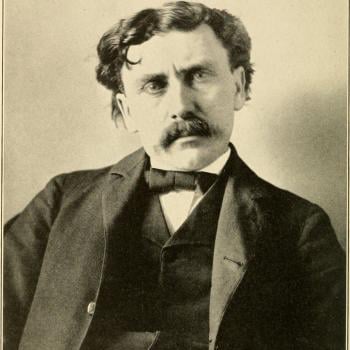Whenever I teach a course on Christian history, I always use samples of music, whether medieval chants or modern hymns, because that was commonly the means by which believers heard and absorbed their doctrine. In recent posts, I have been discussing some of the alternative scriptures that so powerfully shaped Christian thought, and one at least of those has left a remarkable musical heritage. I’m speaking of what was once one of the most potent and beloved Christian texts: the prophecy of the Sibyl. The resulting music is also a gorgeous cultural achievement. Please follow some or all of the youtube links cited below!
Reputedly, the ancient world knew a number of prophetesses, or Sibyls, and oracles circulated widely under their name. Composed between about 150BC and 300AD, these were eventually collected in the sixth century. As we examine them today, though, we can trace their very diverse origins, and some at least were composed by Jews or Christians. In brief, “the Sibyllines represent the Apocalyptic of Hellenistic Diaspora Judaism” (P. Vielhauer, in Schneemelcher ed., New Testament Apocrypha, ii, 600). From a Christian point of view, these Sibylline oracles would exercise an extraordinary and long-lived influence because they apparently represented a firm prediction of Christian truth stemming from sources that were pagan, and so presumably objective. If even the pagans acknowledged this fact, who could gainsay it? (You can find the whole Sibylline text at sacred-texts.com and at earlychristianwritings.com).
Many portions of the Sibyllines attracted excited Christian scholars, but I will focus here on one particular oracle, the most influential. This is the eighth oracle, a second or third century text attributed to the Erythraean Sibyl. Lines 217-250 are an epic poetic rendering of the apocalypse and the Day of Judgment:
Sounding the archangel’s trumpet shall peal down from heaven,
Over the wicked who groan in their guilt and their manifold sorrows.
Trembling, the earth shall be opened, revealing chaos and hell.
Every king before God shall stand in that day to be judged.
Rivers of fire and brimstone shall fall from the heavens.
But beyond these poetic qualities, this section also has a feature that intrigued later generations. In Greek, the poem is an acrostic, and the first letter of each line spells out the words Ιησοῦς Χριστος Θεοῦ υιὸς σωτηρ, σταυρός – Jesus Christ, Son of God, Savior, Cross. (The modern English rendering I have quoted here tries to reproduce this effect by spelling out the word SOTER).
If we further reduce that phrase to its initials, and omit the “cross”, then we are left with the word ichthyos, or fish – which is why early Christians used the fish symbol for Christ. A huge amount of symbolism and doctrine is thus crammed into a short space.
Other Sibylline texts were cited as prophecies of Christ, but this one in particular – the Versus Sibyllae de die iudicii, or more briefly, the Iudicii Signum – fascinated readers and artists for well over a millennium. Augustine gave a Latin rendering of it in the City of God, and the acrostic was a source of wonder to prominent medieval scholars across Latin Europe.
Artists and composers loved the poem. It is referenced famously in the thirteenth century Dies Irae Dies Illa, where the destruction of the world and the final Judgment are prophesied by David and the Sibyl – Teste David cum Sibylla! In that form, the Sibyl has reached worldwide fame through Requiem settings by Mozart, Verdi, and many others.
As if that wasn’t enough, the Iudicii Signum also circulated in popular culture. Medieval translations appeared in French, as well as Provencal and Catalan, which in the Middle Ages were among Europe’s great literary languages. The magnificent Catalan version, El Cant de la Sibilla, was sung every Christmas Eve in the cathedral of Palma, on the island of Majorca, and you can hear a spine-tingling version of it. (Here is another of many available versions).
The song itself is the centerpiece of a whole liturgical drama, which is still enacted today. (The 2009 performance is available here).
The Sibyllines also flourished in Slavic Orthodox countries, above all Russia. Although the Russian interest developed slower than that in Western Europe, the Sibyllines fascinated the Tsarist culture of the seventeenth and eighteenth centuries.
Looking at the enduring influence of the Sibyllines, the question of classification comes to mind. For centuries, the Sibyllines had something close to scriptural authority, particularly the Iudicii Signum. Yet they would not normally be classified as Christian apocrypha or pseudepigrapha, because they notionally claim the authorship of a pagan figure, rather than either an Old Testament prophet or a Christian apostle. Even so, “Christian Sibyllines” are included at some length in Schneemelcher’s New Testament Apocrypha, ii 703-745.
But how exactly should we categorize this very important literature? What exactly are we dealing with here?















